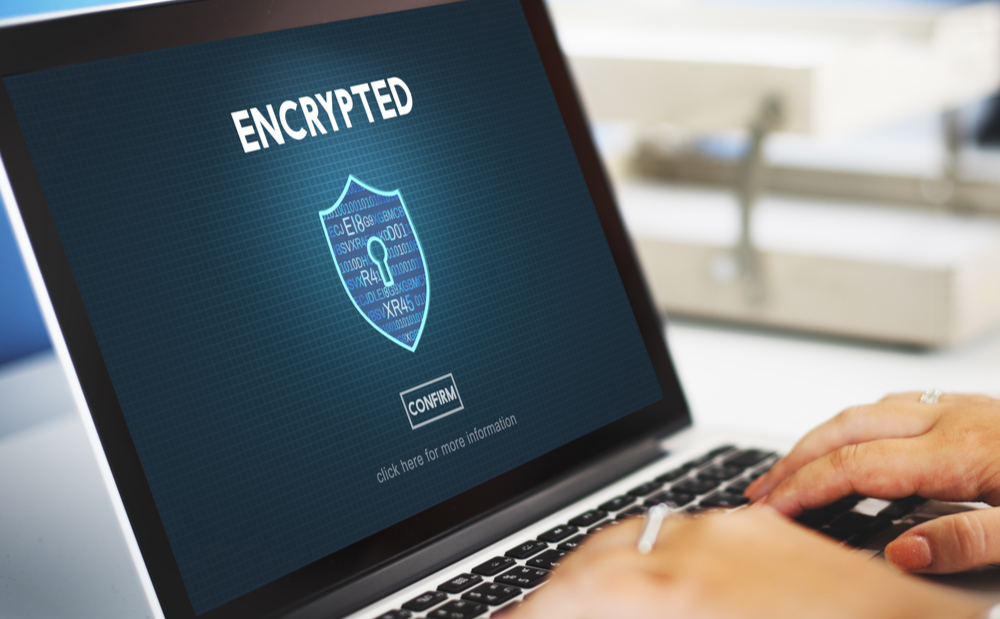
Stolen Laptop? This WEIRD Method Can Protect Your Data

Losing your laptop or having it stolen can be quite miserable. Not only will you experience a financial setback that will dent your pocket, but your personal information will be accessed by whoever gets hands on it; especially if you didn’t have a password in the first place!
Unfortunately, your normal password-protected account cannot protect your data in the long run. While it may prevent attackers from logging to your account, there are quite a number of devious methods through which hackers can use to gain access to your files.

La1n / Shutterstock
For example, if the culprits remove your hard drive and insert it in another laptop, they will instantly have access to the files that are stored in there. In some rare cases, they might even have access to view your passwords, emails, and personal information that you may have stored!
Encryption is the Key
Fortunately, you can protect your personal information from these kind of attacks with the help of encryption. In fact, encryption is a feasible mathematical method that is used to restructure data.
So, if you encrypt your files, there is no way in which a hacker can be able to read and utilize them without having a key first. This means that if anyone attempts to access the information, they won’t be able to see a thing without the password. The great thing about encryption is that you don’t have to be a super geek to be able to use it. In fact, you can get it up and running in a couple of minutes!
The Basics of Hard Drive Encryption
Getting started is simple and easy. For example, if you have a Windows laptop, you can follow this simple process:
- Settings
- System
- About
- Device Encryption
You’ll then need to access your Microsoft account for this feature to work effectively. It’s one of the easiest and best ways to be able to protect your personal information.
However, if your laptop doesn’t have device encryption features, you can use other encryption tools such as BitLocker. It is one of the most efficient apps, and is available for Windows versions starting for professional and above.
It’s incredibly easy to get started. Just follow the following simple steps:
- Windows Control Panel
- System and Security
- Manage BitLocker
From here, you can select the drive that you want to encrypt, and then proceed to Turning On Bitlocker. After doing this, you will receive a directive to create your password as well as create your encryption key. Make sure to put BitLocker in a secure place, and not directly in your computer!

PATTYARIYA / Shutterstock
If none of these is an option for you, you can proceed to download a free program known as VeraCrypt. VeraCrypt will effectively encrypt your hard drive, and will request a password every time you boot your laptop. Though it’s not the simplest option, it’s certainly one to look into!
If you’re a Mac enthusiast, encryption for you is pretty straightforward. Since 2003, modern macs have been coming with an encryption feature called FileVault that will effortlessly encrypt your entire drive. Just use the following process:
- System preferences
- Security and Privacy
- Click on the FileVault tab
- Turn it on and proceed to create your password to get started with encryption
The Downside: Don’t forget your password
If you encrypt your files, forgetting your password is not an option. Even though your data will be protected from hackers, it’s impossible for you to access your personal information if you forget the password as well as the recovery key.

Rawpixel.com / Shutterstock
So, if you tend to forget your password easily, then it’s monumental that you write it down and keep it somewhere safe. And no matter the situation, it’s monumental that you always backup the data. You can even keep it on another drive or a cloud-based service that will keep you data safe and secure!
More in Legal Advice
-
New York to Mail Out One-Time Inflation Rebates. Here’s the Eligibility List
New York is preparing to send out its first-ever inflation refund checks, providing financial relief to millions of residents as prices...
October 3, 2025 -
Here’s What Artists Should Know About Copyright & Its Implications
Copyright protects your art from the moment you create it. The second your drawing, painting, sculpture, or photo is fixed in...
September 27, 2025 -
Everything to Know About Vogue America’s New Editor, Chloe Malle
Chloe Malle just stepped into one of the most powerful roles in fashion media: Head of Editorial Content at Vogue America....
September 21, 2025 -
Did Barron Trump Apply to Harvard? Clearing Up the Rumors
Speculation often swirls around public figures, and in recent months Barron Trump’s college choices became part of the conversation. Questions surfaced...
September 20, 2025 -
Can You Be Naked in Texas?
The Texas public nudity law isn’t as simple as “no clothes, you are in trouble.” It all comes down to intent,...
September 13, 2025 -
Why AI Is Now a Necessity, Not a Choice, for Law Firms
Artificial intelligence is no longer a futuristic concept for the legal industry. It is steadily changing how law firms operate, not...
September 13, 2025 -
Waikiki Lifeguard Cleared in Confrontation With Notorious Criminal
On a hot day at Kuhio Beach, veteran lifeguard Christopher Kekaulike Kam stepped in when things got out of control. A...
August 13, 2025 -
Gawking at the Coldplay ‘Kiss Cam’ Affair Is Voyeurism at Its Worst!
Coldplay concerts are meant to be joyful. But during a recent show, a playful kiss cam bit turned into a public...
August 6, 2025 -
Essential Safety and Success Resources for Trans Journalists
Trans journalists go through tough spaces every day. In a field that often tests your limits, knowing where to turn for...
July 30, 2025














